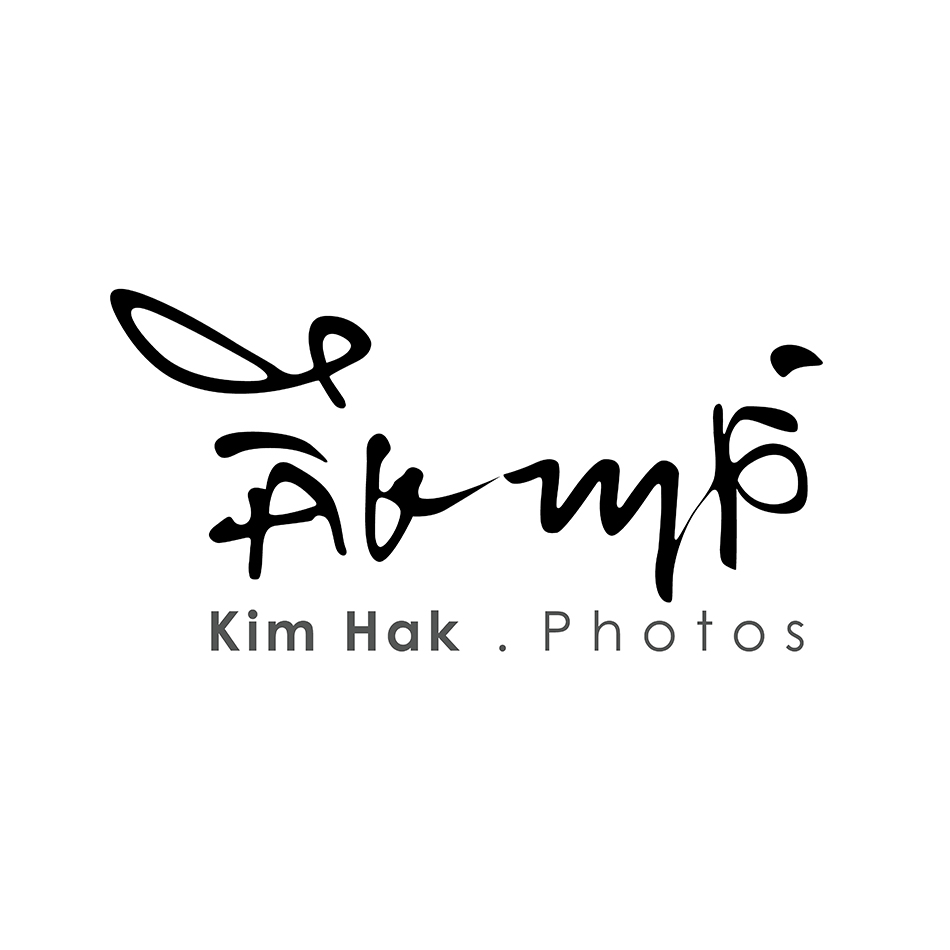Auckland’s Cambodian community go backstage at Auckland Museum
30 June 2021
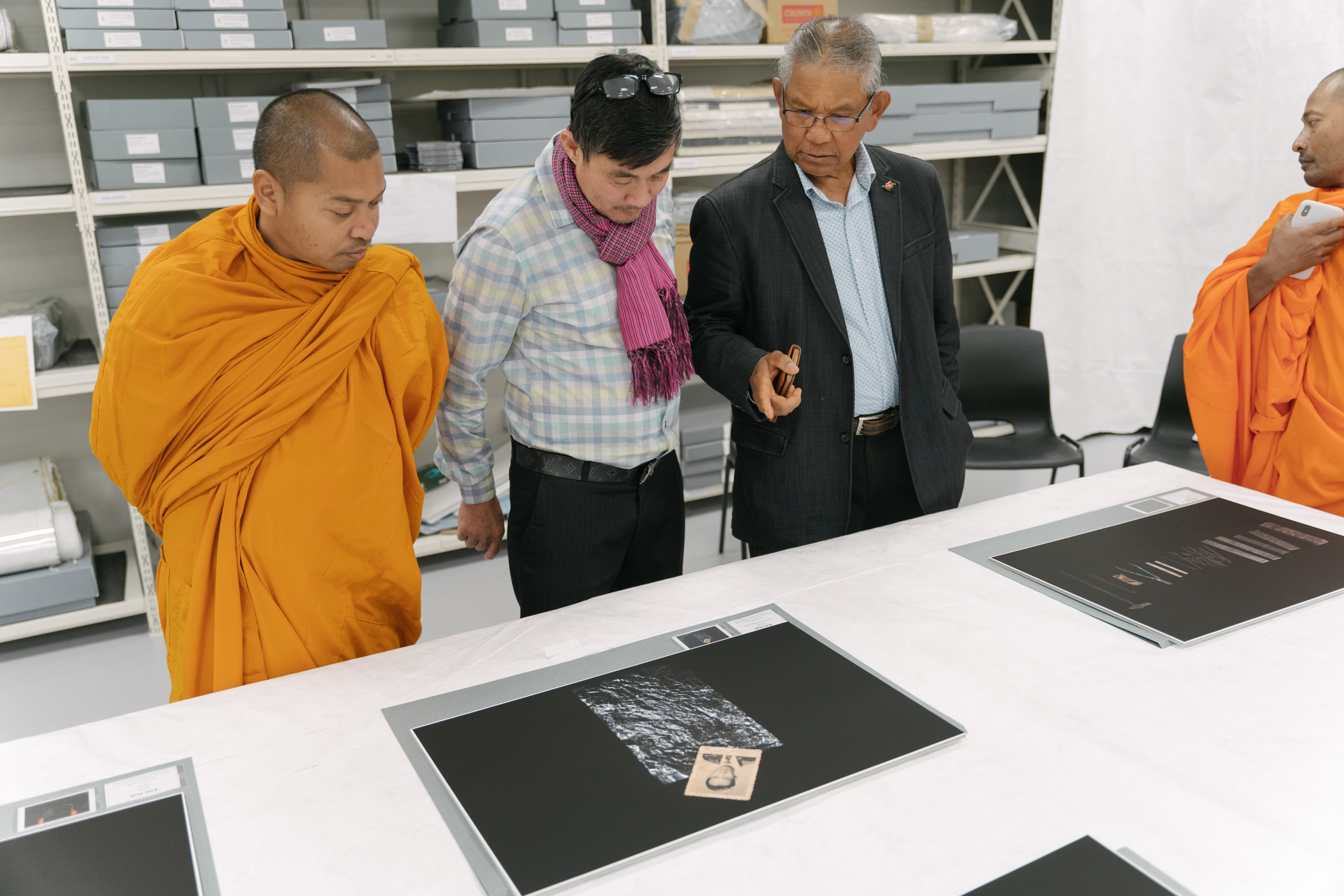
Two members of the Cambodian community and two monks view Kim Hal's photographs
In 2019 the Cambodian artist Kim Hak, with support from Rei Foundation, worked with 12 Cambodian families now in Aotearoa, documenting personal objects that held meaning as a part of their journey in surviving the Khmer Rouge and refugee camps and then resettling in Aotearoa. The resulting photographs were exhibited at Objectspace and later purchased by Auckland War Memorial Museum Tāmaki Paenga Hira to add to their permanent collection. Shaun Higgins, pictorial curator at Auckland Museum, said, “As Auckland’s museum it is a privilege to represent our Cambodian community and to welcome these tāonga into Tāmaki Paenga Hira. They carry with them the story of survival and arrival to these shores.”
At any given time, the vast majority of the museum’s tāonga are kept in temperature controlled storage facilities, with a small proportion on show at the museum. But this doesn’t mean that the stored items are completely inaccessible from the public; on the contrary, the museum regularly works with community groups to show them items of importance behind the scenes.
So it was, that in May 2021 around twenty members of Auckland’s Cambodian community arrived at the museum. The group included several participants in Kim Hak's project and three monks from local Cambodian temples. The group received a private tour of the storage facility and were shown to a room in which several of the photographs were laid out for the community to view. Staff took care to ensure that participants of Kim Hak’s project would be able to see their personal photographs.
So it was, that in May 2021 around twenty members of Auckland’s Cambodian community arrived at the museum. The group included several participants in Kim Hak's project and three monks from local Cambodian temples. The group received a private tour of the storage facility and were shown to a room in which several of the photographs were laid out for the community to view. Staff took care to ensure that participants of Kim Hak’s project would be able to see their personal photographs.
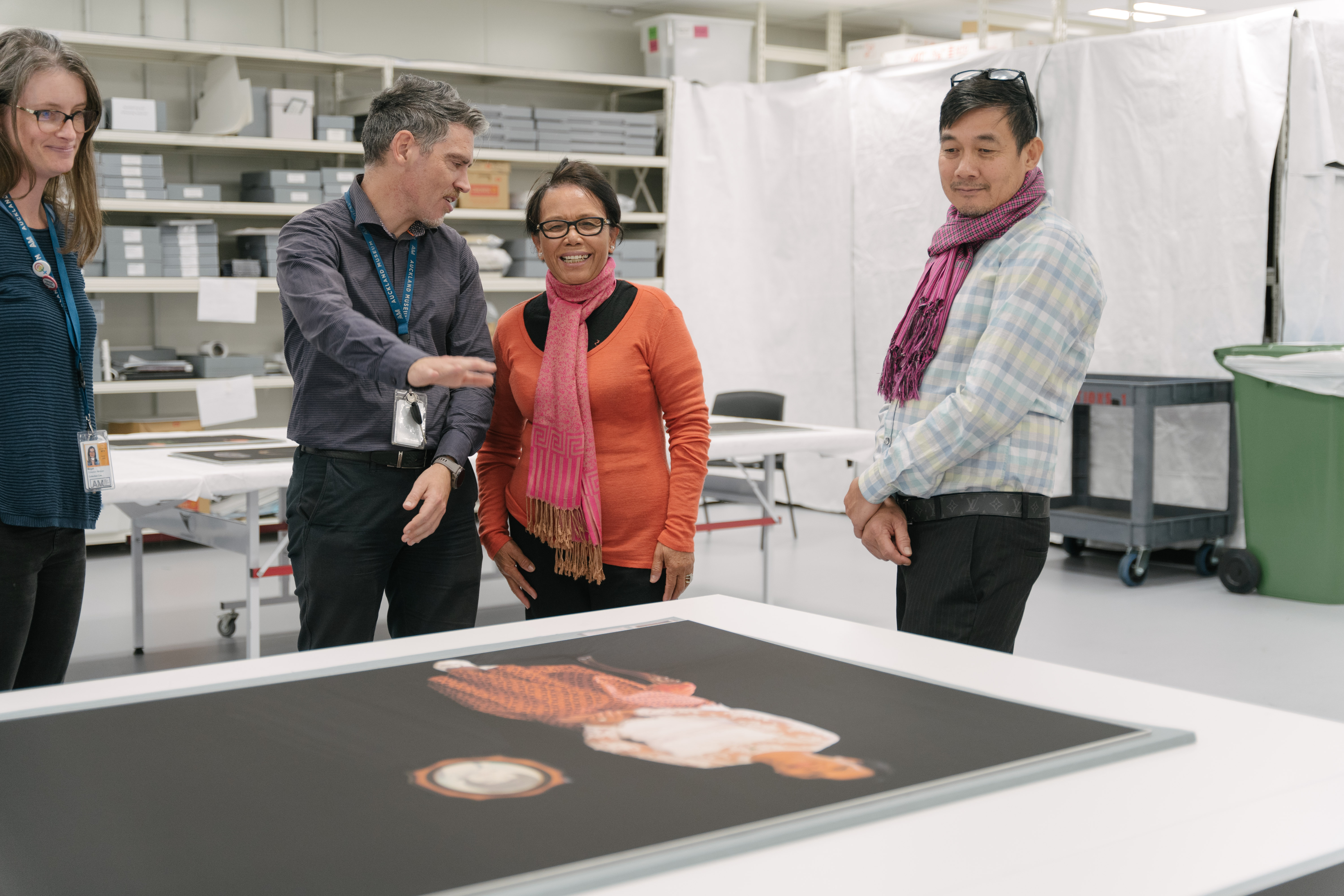
Two members of the Cambodian community and two Museum staff members view Kim Hak's works featuring one of the Cambodian community members
Be Mathin Kuy, who was part of Kim Hak’s project, came on the tour. She says she was glad to see her photograph presented: “My big photo too! My speculum photo, my husband’s photos and my husband’s watch photo, all those objects are holding the stories behind them. I felt great visiting the works at Auckland Museum. [They were] stored very nicely, secure, hygienic, plenty of oxygen, [they] kept all of the objects safe.”
The visit reminded the group of their journeys of survival. Participant Chakara Lim offered a small box which he carried with him from Cambodia to be included in Kim Hak’s images. Kuy said seeing it again in the image was a powerful moment. “I was excited to see the Cambodian people’s objects, this box represents us, where we came from. It is a good memory, because we are refugees and the box [tells the story of how] we travelled from the refugee camp,” Kuy explains.
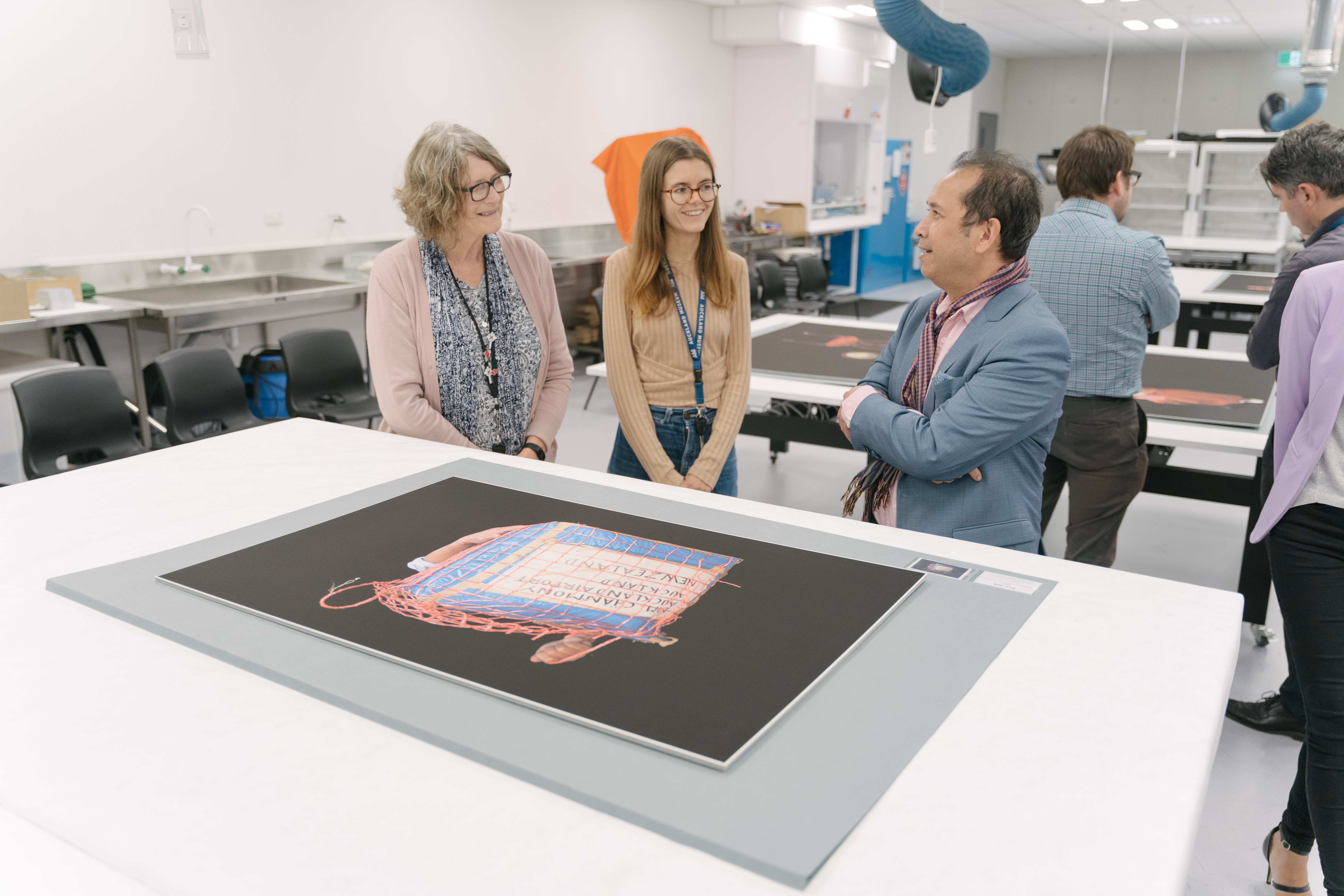
A member of the Cambodian community and two Museum staff members view Kim Hak's works containing the box in which refugees would carry their belongings
At the close of the visit, museum staff and the Cambodian visitors ate together. The Cambodian group thanked the museum for valuing their stories enough to keep them forever as part of the collection. “[We] refugees carried all these objects through a very hard time in the camps, through the Khmer Rouge, all the way to New Zealand. It’s very important to keep the photographs in the museum, to share with the next generation, with the children, grandchildren, great-grandchildren, and connect to the community too,” Kuy says.
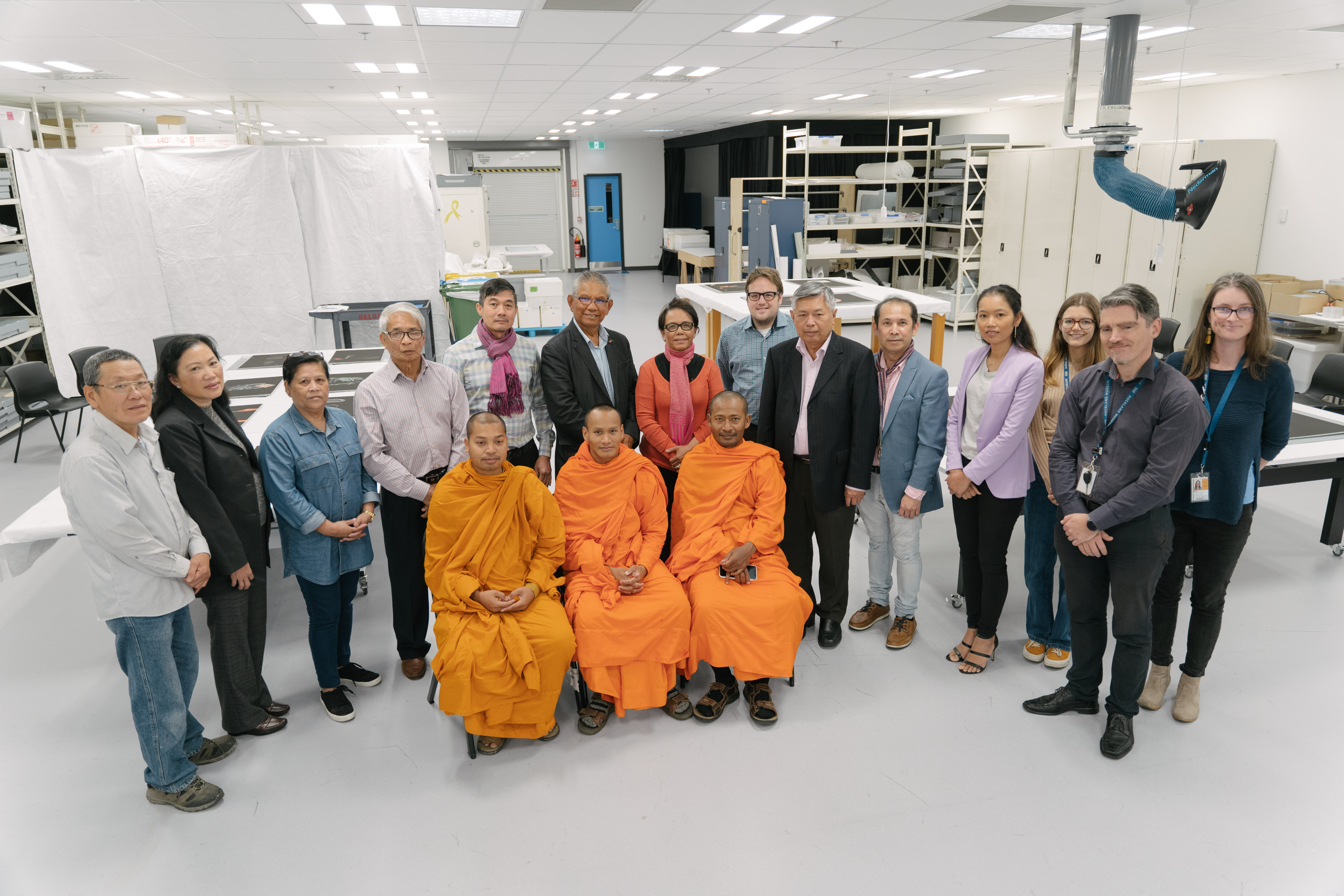
Cambodian community members and Museum staff in the Auckland Museum storage room
Return to Journal




